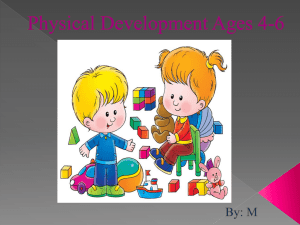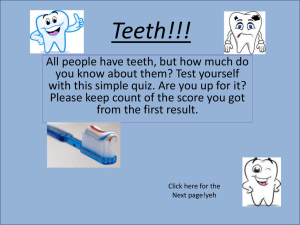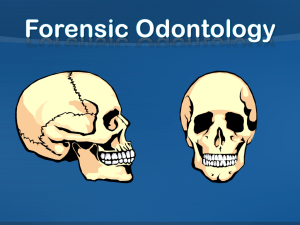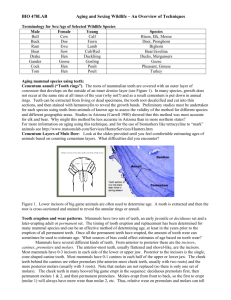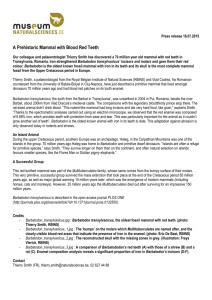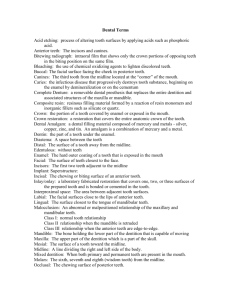Dental Anomalies 1
advertisement
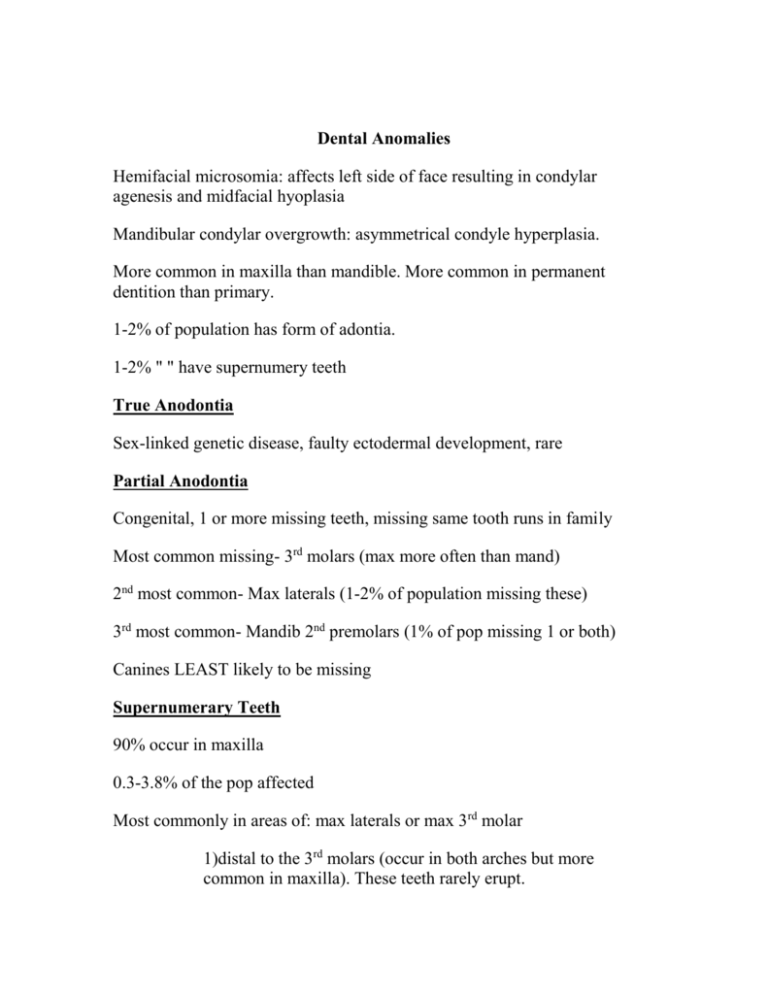
Dental Anomalies Hemifacial microsomia: affects left side of face resulting in condylar agenesis and midfacial hyoplasia Mandibular condylar overgrowth: asymmetrical condyle hyperplasia. More common in maxilla than mandible. More common in permanent dentition than primary. 1-2% of population has form of adontia. 1-2% " " have supernumery teeth True Anodontia Sex-linked genetic disease, faulty ectodermal development, rare Partial Anodontia Congenital, 1 or more missing teeth, missing same tooth runs in family Most common missing- 3rd molars (max more often than mand) 2nd most common- Max laterals (1-2% of population missing these) 3rd most common- Mandib 2nd premolars (1% of pop missing 1 or both) Canines LEAST likely to be missing Supernumerary Teeth 90% occur in maxilla 0.3-3.8% of the pop affected Most commonly in areas of: max laterals or max 3rd molar 1)distal to the 3rd molars (occur in both arches but more common in maxilla). These teeth rarely erupt. 2) 2nd pre-molar area on mandib arch. They resemble the premolars. Call 20A and 20B. Mesiodens: tooth erupting between max centrals Max 3rd molars have the most variable crown shape. Mandib 3rd’s are next. Max laterals most common anomaly is peg lateral (1-2% of pop) Gemination or Twinning Double fused teeth Commonly seen in anterior Result in split of tooth germ Single root, common pulp, notched incisally Less than 1% of pop. Primary dentition more than permanent Fusion Common anterior region, similar to gemination….but more separation Fusion of tooth germs involves dentin Separate pulp chambers Less than 1% of pop Caused by pressure or force during development of adjacent teeth Affects mandible more than maxilla Affects primary more than permanent Concrescence Fusion or growing together of two teeth at the root only via cementum Teeth start off separate then join (unlike fusion) Occurs after eruption due to close proximity Occurs more often in max molar region Hutchinson’s Incisors- screwdriver shaped with notched incisal edges. Cause is syphilis. Mulberry molars- 1st molars have occlusal anatomy (shaped like berries) made of multiple tubercles. Poorly developed, indistinguishable cusps. Caused by prenatal syphilis. Accessory cusps or tubercles Extra enamel projections due to developmental hyperplasia or crowed preeruption conditions. Enamel pearls: small nodules of enamel w/ a tiny core of dentin. Found of distal of 3rd molars and the buccal root furcation of molars. Prevents normal connecive tissue attachment, hence periodontal problems. Talon cusp- small projections in cingulum area of max and mand anterior teeth. This cusp can posses a cusp. May need to be removes because it interferes w/ occlusion. Microdontia- very small teeth. Commonly affects laterals and third molars. Macrodontia- very large teeth. Commonly seen in incisors and canines. Can occur in 1 to entire dental arch. Dilaceration Severe bend or distortion in root or crown. Angles for 45 to 90. Caused by trauma or insufficient space. Hypercementosis- excessive formation of cementum around root after tooth has erupted. May cause webbing of root. Can cause trauma or periapical inflammation. Accessory roots or cusps caused by trauma, metabolic, dysfunction or pressure. Reactions to injury 1)Abrasion- wearing of tooth mechanically. 2)Erosion- non-mechanical, usually due to citric acid. 3)Severe Attrition- wear from normal functions. Grinding 4)Ankylosis- loss of PDL- truly fused to bone. 5)Infection from bone loss. Fusion and Macrodontia

